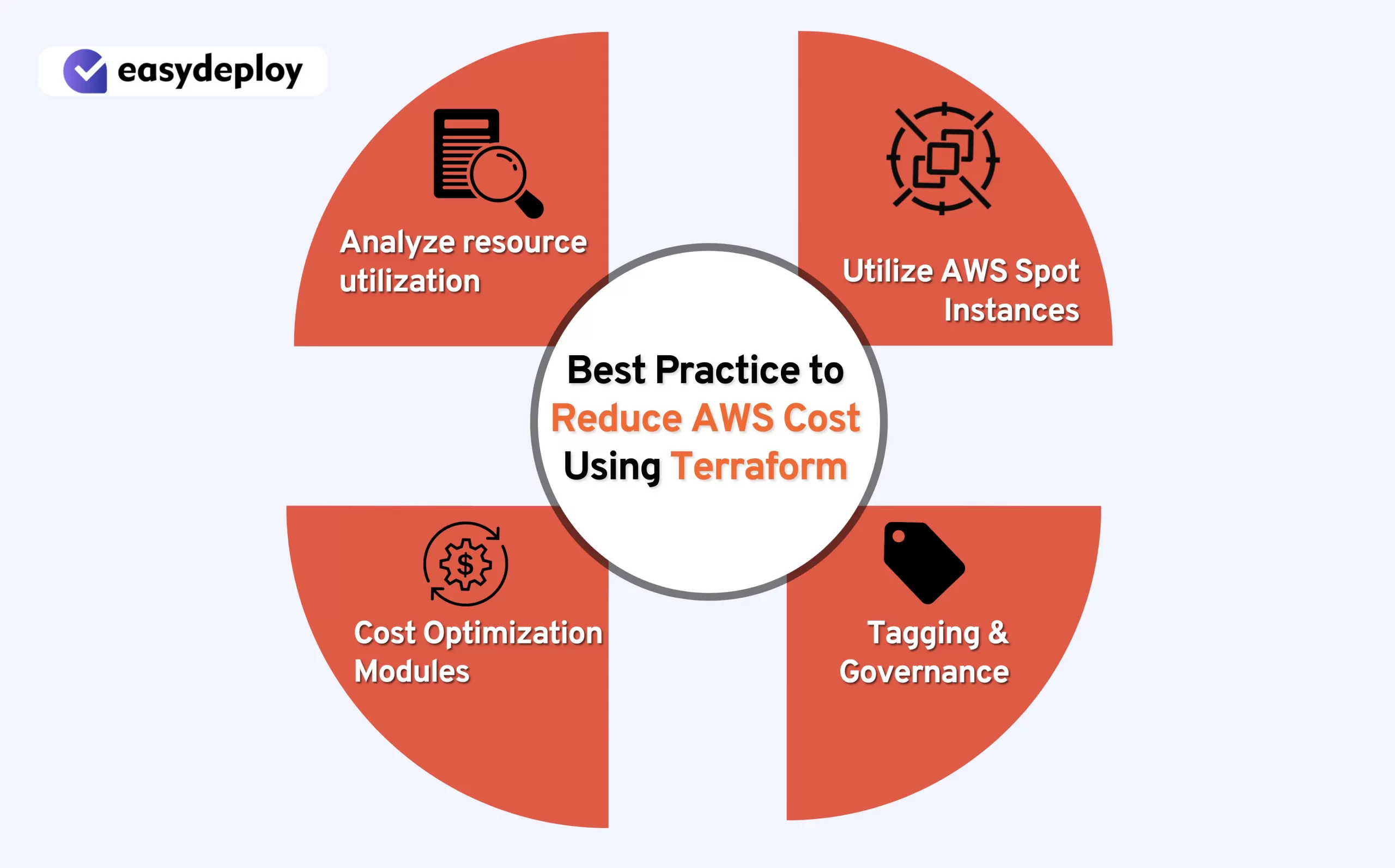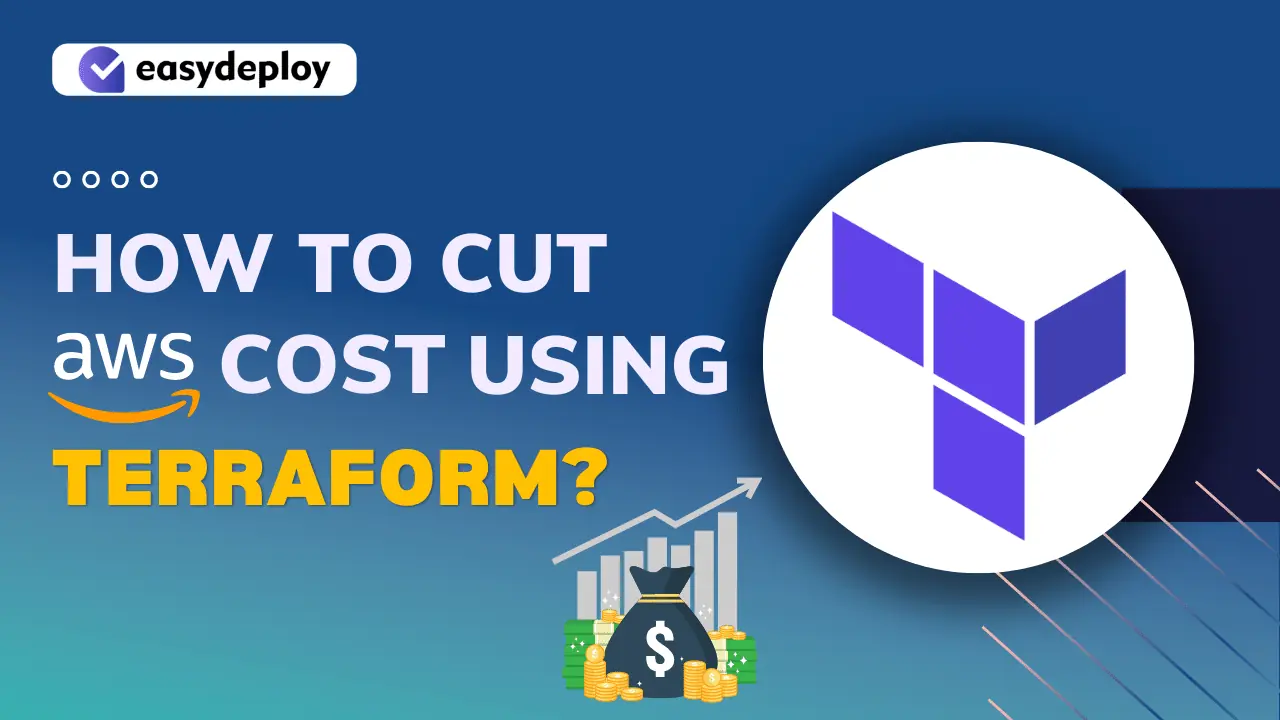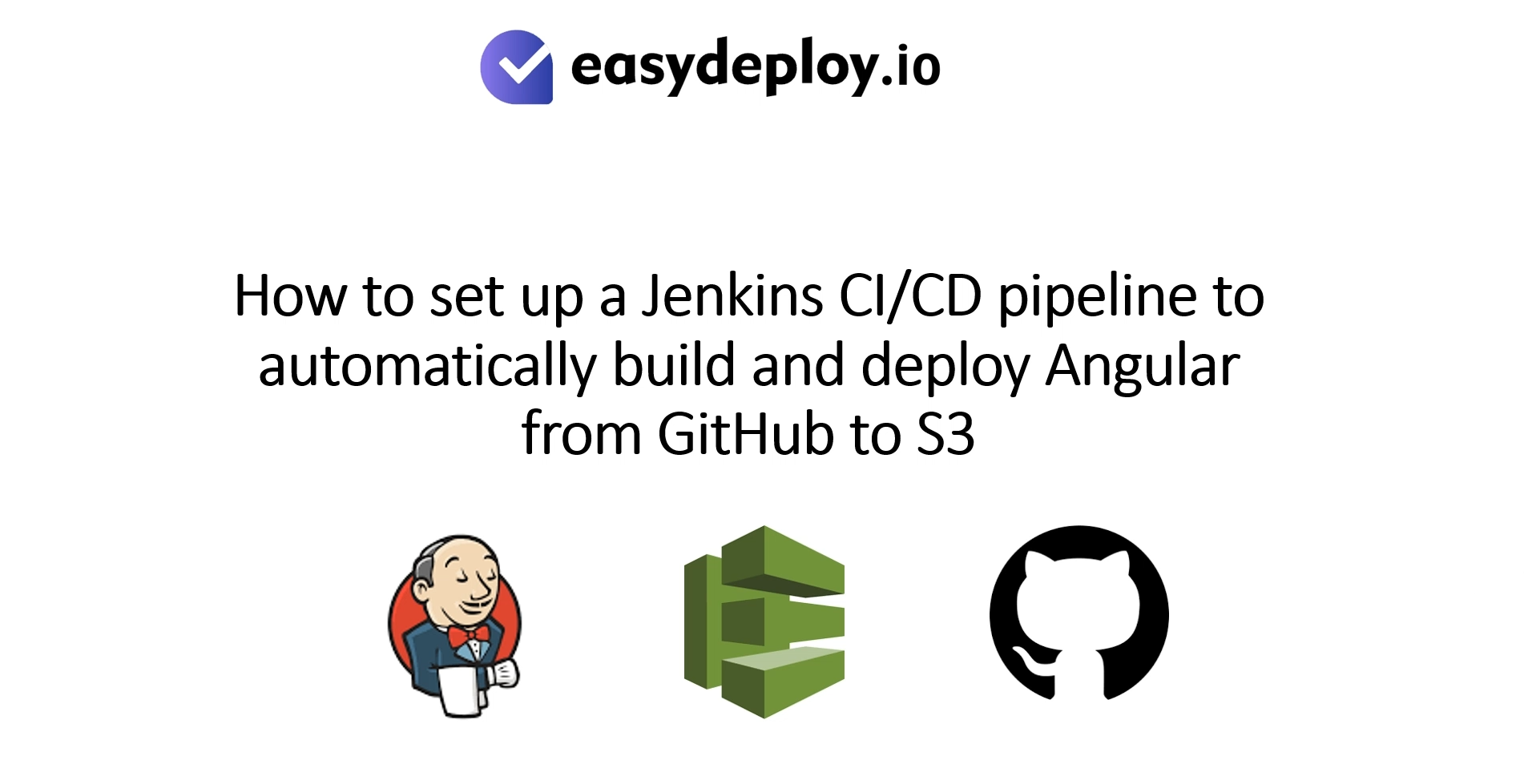Looking to reduce your AWS cost without compromising on performance and scalability? Then you’re in the right place!
Cutting down the AWS bill is a top priority for businesses seeking to optimize their AWS infrastructure. With the power of Terraform Cloud and IaC tool, you can achieve significant cost savings by efficiently managing your AWS resources.
By implementing cost-effective strategies through Terraform Cloud, you can maximize your return on investment while ensuring the scalability and reliability of your AWS infrastructure.
In this article, we’ll explore various strategies and techniques to cut down AWS cost using Terraform Cloud.
Let’s explore some effective ways to cut down AWS cost using Terraform.
How to achieve AWS cost optimization using Terraform?
The cost spent on AWS can differ mainly based on the size and complexity of the business cloud architecture and how it has been managed. But the studies show that the business that is using TerraformCloud to maintain their AWS infrastructure can control AWS Bill by up to 30% compared to manual management after moving to Terraform.
For instance, a case study done by HashiCorp Terraform highlighted an online real estate platform that reduced AWS costs by 80% using Terraform’s Cloud cost optimization features. By finding unused AWS resources, right-sizing underutilized instances, and resource management automation can be made possible and it significantly helps in cost savings.
Similarly, a digital media company in practice has minimized its AWS expenses by 50% with the usage of Terraform’s IaC capabilities. Automating resource deployment and management improved resource utilization and reduced waste, resulting in substantial savings in AWS Bill.
The potential cost savings of Terraform on AWS Cloud can vary greatly, ranging from hundreds to thousands of dollars per month, depending on the complexity of the cloud infrastructure and the efficiency of resource management. However, it’s important to note that individual results may vary, and organizations should carefully plan and implement AWS cost optimization strategies based on their specific requirements and usage patterns.
Also Read: How to Choose Right AWS Consultant | A Comprehensive Guide (easydeploy.io)
Best practices to minimize the AWS Cost using Terraform Cloud:
1.Analyzing the resource utilization
The analysis of the resource utilization process involved in the identification of the main cost drivers in your AWS environment like AWS EC2 instances, RDS databases, or AWS S3 storage. And the usage of AWS Cost Explorer or third-party tools can provide insights into the cost breakdown.
2. Utilizing AWS Spot Instances
An effective cost-saving strategy is to make use of AWS Spot Instances. These instances are available at a lower price compared to On-Demand instances, making them ideal for non-critical workloads. With Terraform cloud, launching Spot instances and optimizing costs becomes a breeze.
By utilizing AWS Spot instances, businesses can significantly reduce their AWS costs without compromising the performance of their applications or services.
You can run code using AWS Lambda, a serverless computing service offered by Amazon Web Services (AWS), without having to set up or maintain servers. As an IaC tool, Terraform may be effectively utilized to develop and manage AWS Lambda functions. To further explain how Terraform aids in managing Lambda functions and obtaining cost savings, continue your reading.
- Infrastructure as Code: Terraform lets you define your infrastructure as code, enabling you to manage your Lambda functions and related resources in a repeatable and scalable way by versioning, sharing, and managing them. Using the declarative syntax of Terraform, you may specify your Lambda functions, together with their settings and dependencies.
- Resource Provisioning: You can use Terraform Cloud to define the intended state of your Lambda functions and automatically provide the required AWS resources. This involves setting up environment variables, specifying AWS IAM roles and permissions, building the actual Lambda function, configuring triggers (such as API Gateway or AWS S3 events), and more. Terraform streamlines the provisioning process for you by abstracting the underlying API calls.
- Infrastructure Updates: You might need to modify Lambda functions as your application develops. By enabling you to adjust your Terraform settings and then apply the changes, Terraform makes the process of updating your functions simpler. To ensure the least disruptive updates to your running functions, Terraform does a difference between the desired state and the existing state before automatically applying the necessary changes.
- Resource Management: Terraform gives you a centralized view of your Cloud infrastructure, which makes it simpler to manage and keep up with your Lambda functions. You can make targeted updates, handle resource dependencies, and investigate the condition of your AWS infrastructure using Terraform commands. When administering individual Lambda functions through the AWS Management Console or CLI, helps to minimize manual labor and possible errors.
- Cost reduction: AWS The serverless paradigm used by Lambda by default offers cost savings because you are only charged for the actual compute time used by your functions, not for unused servers. You can simply manage the number of functions, their configurations, and trigger events by using Terraform to manage your Lambda functions. This enables you to optimize expenses based on the needs of your application.

3. Tagging and Governance
Implementing consistent resource tagging practices using Terraform is a crucial aspect of AWS cost optimization. By tagging resources with relevant metadata, you gain better visibility into your AWS infrastructure, allowing you to track and manage AWS costs more effectively. Here are some details on how to implement resource tagging and leverage Terraform for cost management:
- Establish a tagging strategy: Define a set of standardized tags that align with your organization’s requirements and cost allocation needs. Common tags include environment (e.g., production, development), project, owner, and cost center.
- Consistency is key: Ensure that tags are consistently applied to all relevant resources across your AWS environment. Inconsistent or missing tags can hinder cost-tracking efforts.
- Automation and enforcement: Use Terraform to automate the application of tags during resource provisioning. Implement tagging requirements in your Terraform configurations to enforce consistency.
4. Cost Optimization Modules and Community Contributions
One of the advantages of using Terraform Cloud is the extensive community support and the availability of community-contributed modules. These modules are designed to address specific use cases and provide pre-built solutions for various tasks, including AWS cost optimization. By leveraging these modules, you can benefit from the expertise and best practices shared by the Terraform community.
For example, you can find modules that focus on rightsizing your AWS resources. These modules help you analyze your existing AWS infrastructure and identify opportunities to optimize resource allocation based on actual usage patterns. By right-sizing your resources, you can eliminate overprovisioning and reduce unnecessary costs.
There are also modules available for cost monitoring and optimization. These modules provide automated mechanisms to track your AWS spending and identify areas where you can optimize your AWS costs. They can help you set up cost dashboards, generate reports, and implement cost-saving measures, such as leveraging reserved instances or utilizing spot instances for non-critical workloads.
Workload-specific optimization modules are also available within the Terraform community. These modules are tailored to optimize costs for specific types of workloads, such as web applications, databases, or data processing pipelines. They provide configuration templates and best practices to ensure that your infrastructure is cost-efficient without compromising performance or functionality.
Also Read: What is the cost of hosting a website on Amazon AWS? | easydeploy.io
Advantages of Terraform for AWS Cost Optimization
- Terraform offers unique advantages when it comes to optimizing AWS costs. Firstly, its cloud-agnostic nature allows businesses to manage resources across multi-cloud platforms, including AWS, providing the flexibility to choose the services that best fit their needs and budget while avoiding vendor lock-in.
- Terraform allows you to plan and manage your AWS resources effectively. By utilizing Terraform’s state management capabilities, you can track changes to your AWS infrastructure over time and understand the impact of those changes on cost. This visibility helps you make informed decisions about resource allocation and usage.
- Secondly, Terraform’s code-based approach enables automation of the deployment and management of cloud resources, minimizing human error and improving efficiency. The declarative syntax of Terraform makes it easier to manage changes and reduces the risk of costly mistakes.
- Lastly, the active and supportive Terraform community ensures continuous improvement of the tool with new features, optimizations, and bug fixes. The community also provides abundant resources such as documentation, tutorials, and plugins, empowering businesses to maximize Terraform’s cost-saving capabilities on AWS Cloud.
By implementing these Terraform configurations, you can automate the setup of cost monitoring and alarms. AWS Cost Explorer provides you with detailed cost insights, while CloudWatch alarms ensure that you are alerted when cost thresholds are exceeded. This proactive cost management approach helps you identify cost anomalies, take corrective actions, and optimize your AWS spending.
Conclusion
Hope this article provides the best practices for attaining AWS cost optimization with the usage of Terraform.
By harnessing the power of Terraform and its integration with AWS services, you can implement cost-saving measures and effectively manage your AWS cloud infrastructure, resulting in significant AWS cost reductions. Start implementing these strategies today and unlock the potential for cost optimization in your AWS environment by simply accessing the Easydeploy services.
Regularly review your infrastructure, monitor costs, and iterate on your Terraform configuration to ensure continued efficiency.










